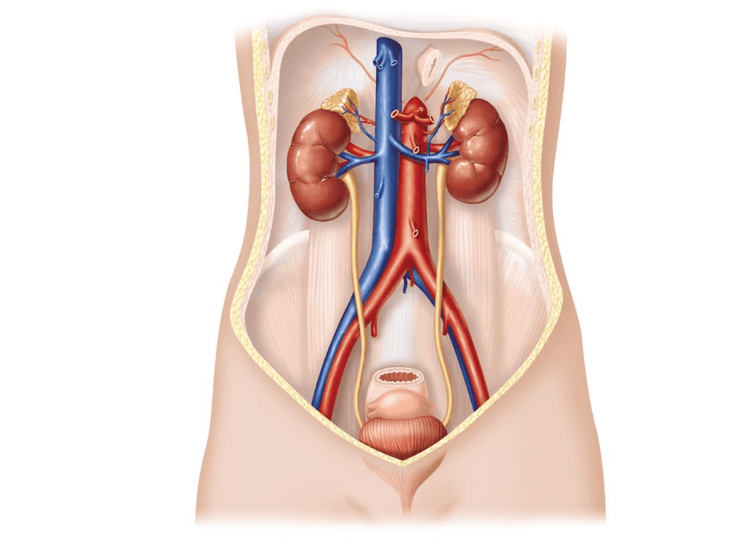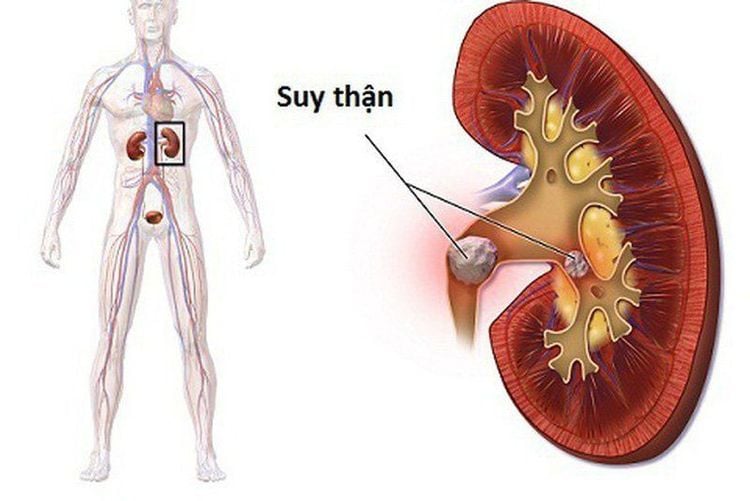This is an automatically translated article.
The article is professionally consulted by Master, Doctor Le Xuan Thiep - Radiologist - Department of Diagnostic Imaging - Vinmec Ha Long International Hospital. The doctor has extensive experience in the field of diagnostic imaging.X-ray of the urinary system is an imaging test commonly used in the diagnosis of urinary tract diseases. There are many methods of X-ray urology, each method will have different indications and advantages and disadvantages.
1. Unprepared urinary tract X-ray
This is the most commonly used method to help diagnose urinary tract diseases. Called unprepared urological X-ray to distinguish it from X-ray using contrast, however, before the scan is done, the patient is still given a pill or enema of the entire stool. intestinal tract, the main purpose is so that stool and intestinal gas do not obscure lesions on the urinary system.Indications of unprepared urology X-ray include:
Survey of renal shadow in terms of position, size, and shape. Examine the urinary tract for contrast-enhanced foreign bodies such as stones or drains. Preliminary assessment of urinary abnormalities before specifying more specialized techniques. After an unprepared urinary tract X-ray, the doctor can suggest the diagnosis of some abnormal urinary tract diseases as follows:
Enlarged kidney ball : Suggesting hydronephrosis, pus stasis, hematoma in the kidney due to injury or kidney cancer.

Chụp X quang cho phép xác định các bệnh lý về đường tiết niệu
2. X-ray of urinary system with intravenous contrast
In the past, X-ray of the urinary system with intravenous contrast (UIV) was a technique to help diagnose most urinary tract diseases and was ordered very often. However, recently with the development of electronic tomography (CT scan), the role of UIV has faded.This technique is based on the principle of using a contrast agent containing water-soluble iodine, which, after being injected intravenously, is selectively eliminated through the urinary tract. After contrast injection, X-ray films of the urinary system will be taken at different times to detect abnormalities such as:
Evaluate and monitor urine circulation and renal excretory function. Assess renal morphology to detect malformations, tumors, trauma or tuberculosis. Detection of non-contrast stones. Indications for urography with intravenous contrast include:
Differential diagnosis of renal enlargement with intra-abdominal tumors. Non-contrast or contrast-enhanced stones, but the image is not clear. Hydronephrosis, renal cyst. Hematuria or chyluria, renal tuberculosis, kidney cancer. Chronic kidney disease, pyelonephritis. Renal hypoplasia.

Bệnh nhân suy thận chống chỉ định thực hiện phương pháp này
History of allergy to iodinated contrast agents, or iodine-containing preparations. Patients with renal failure, liver failure, heart failure, ascites. Pregnant women Gross hematuria is not controlled.
3. X-ray of retrograde ureteral ureter with contrast agent
This is a urinary tract X-ray method used when intravenous contrast is not effective (because the contrast medium is not filtered through the kidneys or there are contraindications such as renal failure, drug allergy). iodinated contrast).The purpose of this method is to help detect urinary tract diseases such as: Contrast stones in the ureters or detect obstruction of the ureter due to stones or other causes.
This method is performed by inserting the catheter upstream from the urethra into the bladder to enter the ureter, then inject the contrast agent upstream and take radiographs of the urinary system at 0 and 5 minutes later. inject.

Sử dụng thuốc cản quang trong chụp X-quang niệu quản bể thận ngược dòng giúp phát hiện các bệnh đường tiết niệu
Please dial HOTLINE for more information or register for an appointment HERE. Download MyVinmec app to make appointments faster and to manage your bookings easily.
SEE MORE
Intravenous contrast nephrography – intravenous urogram (UIV) Does X-ray have any health effects? Everything you need to know about X-rays of the urinary system













